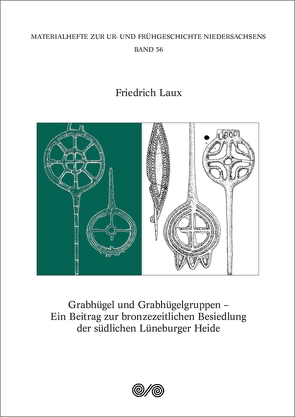
In the Bronze Age, Lower Saxony formed an important contact zone between the South German Middle Bronze Age with its tumuli and the Nordic Bronze Age of Scandinavia, but the majority of its barrows were excavated in an unprofessional manner in the 19th century A.D. Therefore the research of Hans Piesker [1894-1977], to whom this volume is dedicated, is of great importance. His numerous documents, plans, and reports were systematically collected, described in detail, and thoroughly analysed and are fully edited here. On the basis of this reappraisal of the grave inventories, five separate settlement areas were identified, the inhabitants of which occupied hamlets of up to six farms and isolated farmsteads and buried their dead over several generations in groups of tumuli with the heyday of occupation in the Early Bronze Age with its South German connections. At the end of the Early Bronze Age an abrupt end of settlement occurred, followed by a Middle Bronze Age reoccupation from a north-easterly direction. The Late Bronze Age is not attested, but with the Early Iron Age burials started to be deposited once more.
Aktualisiert: 2022-08-04
> findR *
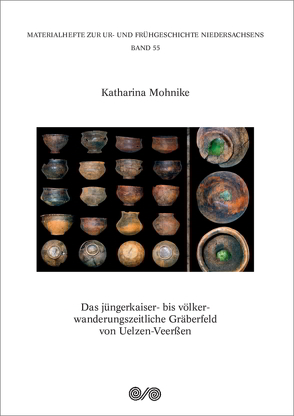
Grundlage der vorliegenden Studie ist die Erfassung der rund 2.700 Grabbefunde von Uelzen-Veerßen, Lüneburg-Oedeme, Bad Bevensen und weiteren Fundstellen des Ilmenaugebietes. Ihre Beschreibung und chronologische Einordnung anhand der Funde aus Keramik, Glas, Knochen, Geweih, Elfenbein, Harz, Stein und Metall stehen im Zentrum der Arbeit. Weitere Themen sind die horizontalstratigraphische Abfolge sowie Gestalt und Ausstattung der Gräber. Der Übergang von älterer zu jüngerer RKZ ist durch markante Veränderungen im Bestattungsbrauch und die Verlagerung vieler Gräberfelder geprägt. Seit dem 4. Jh. wurden fast ausschließlich Urnengräber angelegt, daneben wenige Brandgräber mit organischem Behältnis und seit dem 5. Jh. auch einzelne Körpergräber. Die importarme Ilmenaugruppe ist relativ einheitlich durch “Buckelgräber” charakterisiert, Hügelgräber mit zentralem Brandgrab und z. T. mit Kreisgraben, ggf. mit einer Grabenöffnung nach Süden. Die Bestattungssitten für Kleinkinder und Beigabenzahl variierten lokal. Die Gräberfelder endeten um 500, sichere Gräber des 6./7. Jh. sind äußerst selten, obwohl Pollenanalysen Siedlungskontinuität bis ins 6. Jh. belegen.
This study is based on the documentation of some 2,700 graves from Uelzen-Veerßen, Lüneburg-Oedeme, Bad Bevensen and other sites in the Ilmenau area. Their description and chronological classification on the basis of finds made from pottery, glass, bone, antler, ivory, resin, rock, and metal form the core of the thesis. Other topics are the horizontal stratigraphy as well as the shape and equipment of graves. The transition from the earlier to the later Roman Iron Age is marked by significant changes as to burial customs and the relocation of many cemeteries. Since the 4th century A.D. urn graves were the dominant burial type with only few cremations with a container of organic material and, since the 5th century, also some inhumations. The Ilmenau Group is characterised by scarce imports and relatively homogeneous “hummock graves” [Buckelgräber], tumuli with a central cremation and sometimes a ring ditch usually interrupted at the south. Funeral rites for infants and numbers of grave goods varied on a local basis. All cemeteries ended around A.D. 500 with graves of the 6th/7th century being extraordinarily rare, although pollen analyses imply settlement continuation into the 6th century A.D.
Aktualisiert: 2020-07-14
> findR *
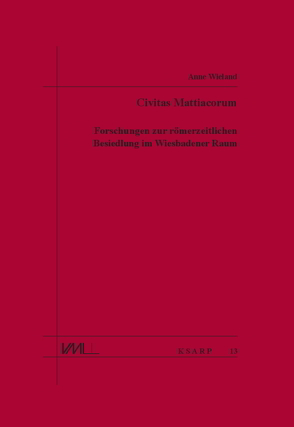
The study is based on a catalogue of 148 archaeological sites and extensively deals with the Roman occupation around Wiesbaden [civitas Mattiacorum], which was named after a group of Augustan settlers, the Mattiaci, a sub-tribe of the Chatti. There are 71 certain and 39 probable villae rusticae, 3 Roman pits, 23 surface finds and 12 grave complexes. 14 of these belong to the 1st century A.D., 58 to the Middle Empire, and 22 to Late Antiquity, which ended with the abandonment of the Rhine frontier in A.D. 408. The occupation of the fertile soils of the Main-Taunus district followed water courses and favoured the River Main. In the city of Wiesbaden it focussed on major streams, the River Rhine, the Taunus foothills and major roads. In the Rheingau-Taunus and Rhein-Lahn districts the restricted topography between the Rhine and the Taunus or limes was used respectively, as were stream valleys. The immediate hinterland of the limes remained vacant. There is evidence for the economic branches of viticulture, pottery, lime/gravel/sand extraction, agriculture, other crafts, mining, and health spas. Statements on the settling of veterans and on ritual practices are possible, too.
Aktualisiert: 2019-03-07
> findR *
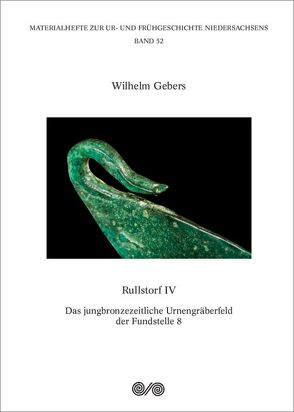
The Kronsberg Hill near Rullstorf, distr. Lüneburg, forms a settlement area of some 24 ha. Thanks to thick layers of blown sand, it offered extraordinary preservation conditions for settlements, graves, ritual buildings, and activity zones from the Stone Ages to Early Medieval times and was excavated in the past 30 years ahead of sand and gravel mining. After the evidence from the large find area 5 [MAN 25, 44, 48] this 4th volume presents the finds and features of an Urnfield cemetery on the SW-slope at site 8 [BA per. IV]. It formed an entity with a contemporaneous settlement some 300 m to the east, which perished in a conflagration. The completely excavated cemetery comprised some 118 graves [48 children, 37 adults, 23 ?, ca. 10 destroyed] with pottery urns protected by a stone encasement. Only 29 graves, mostly in the centre, contained grave goods such as pins, bracelets, razors, small spear heads, awls etc. which represent 3 to 4 generations. Nearby there were also stone pavements, erratic blocks, and hearths. Two natural scientific papers analyse origin and casting technique of the bronze objects [Lehmann / Avraam] and cremated remains as to sex and age at death [Caselitz].
Aktualisiert: 2019-01-17
> findR *
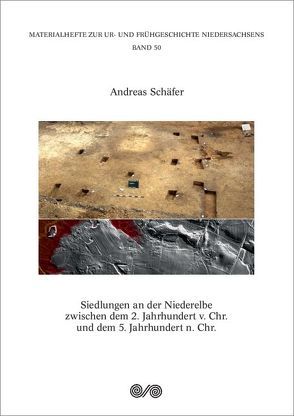
This book undertakes a comprehensive study of human settlement behaviour along the lower River Elbe between the early pre-Roman Iron Age and the end of the Migration Period. It included the Federal State of Hamburg and, north of the River Elbe, the districts of Pinneberg, Segeberg, Stormarn, and Duchy of Lauenburg, and south of it, the districts of Harburg and Stade. In collaboration with the Federal Office for Geology in Hamburg and the Federal Bureau for Geoinformation and Surveying in Hamburg a large-scale mapping project was conducted. Additionally, the inclusion of airborne and terrestrial laserscan data allowed completely new insights into the archaeological cultural landscape, e. g . its Celtic field systems and ridge and furrow fields. Unpublished finds and house plans are now presented for the first time and were investigated as to chronology, spatial distribution, craft traditions, and house landscapes, for which reference to existing grave chronologies was made. Most recent methods of natural scientific analysis were applied, too. A particularly important result was the definite falsification of a supposed settlement hiatus in the 3rd century A.D..
Aktualisiert: 2022-09-17
> findR *
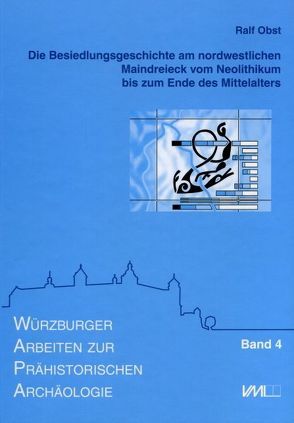
In der Arbeit wurde die Besiedlungsgeschichte eines künstlich begrenzten Kleinraumes in seinen Beziehungen zu Naturraum und Kulturlandschaft diachron über 70 Jahrhunderte seit der Seßhaftwerdung untersucht. Im Mittelpunkt standen Siedlungen anhand von Grabungen, Lesefundkomplexen und Methoden der historisch-geographischen Landesforschung. Die mainfränkische Altsiedellandschaft weist ein analoges Präferenzverhalten bei der Wohnplatzwahl und eine ähnliche Siedlungsdynamik wie Vergleichsräume auf. Abweichungen fallen vor allem in Mittelneolithikum bis Endneolithikum, Römischer Kaiserzeit, Völkerwanderungszeit und Hochmittelalter auf. Besondere kleinräumige Verhaltensprofile lassen sich nur bei Einzelfallprüfung verstehen, wobei auch nicht mehr auszumachende Unterschiede im Naturraum und spirituelle und rechtliche Aspekte zu erwägen sind. Dafür sind künftig noch detailliertere Fundmeldungen an das Landesdenkmalamt wünschenswert. Die Studie erweist das Untersuchungsgebiet als eine der besterforschten Mikroregionen mit eigener Charakteristik innerhalb der mainfränkischen Altsiedellandschaft, deren schwindender Denkmälerbestand weitere Forschungen erfordert.
This study investigates the settlement history of an artificially limited area in its interrelation with natural environment and cultural landscape over 70 centuries from initial sedentariness. It focuses on settlements on the basis of excavations, surface finds, and methods of applied historical geography. In comparison to other regions, the Franconian primary settlement landscape along the River Main displays analogous preference patterns as to the choice of settlement site and similar settlement dynamics. Discrepancies mainly exist for the Middle to Final Neolithic, Roman Iron Age, Migration Period, and High Middle Ages. Peculiar small-scale profiles of behaviour can only be understood by examination of individual cases, in which differences of the natural environment no longer perceivable today and spiritual and legal aspects are to be taken into consideration, too. To this purpose, future find reports to authorities of monument preservation should be even more detailed. The study reveals the research area to be one of the best known micro-regions with individual characteristics within the Franconian primary settlement landscape, the dwindling number of monuments of which demands continued research.
Aktualisiert: 2022-09-17
> findR *
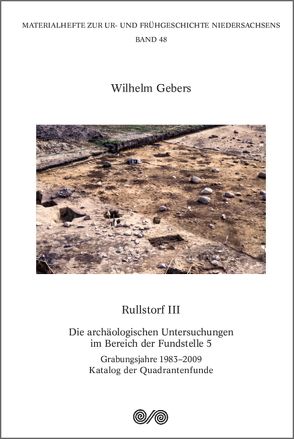
The marked elevation of Kronsberg Hill near Rullstorf, distr. Lüneburg, above the Elbe Valley near Scharnebeck was excavated on a surface of nearly 8 ha during three decades ahead of sand and gravel extraction. Another 6 ha have been declared archaeological monument. Apart from the sheer size of the three find sites 5, 8, and 9, the site is unique because of its almost “Pompeian” preservation of features with enormous numbers of small finds thanks to thick layers of wind-blown sand. The evidence reaches from a Mesolithic campsite via Neolithic longhouses, settlements and cemeteries of the Bronze and Iron Ages, a Langobardic settlement, a Late Saxon cemetery [= IA 14] down to remarkable remains of pre- and protohistoric iron smelting and sunken-featured buildings of Early Medieval times. The third volume on the find material from Rullstorf [after MAN 25 and 44] deals with the finds without a documentable context which were collected in each of the 470 quadrants of the excavation surface, amongst them pottery, flint and rock implements, metal and glass objects, tiles/bricks, slags, bone, charcoal, daub etc.
Aktualisiert: 2022-09-17
> findR *
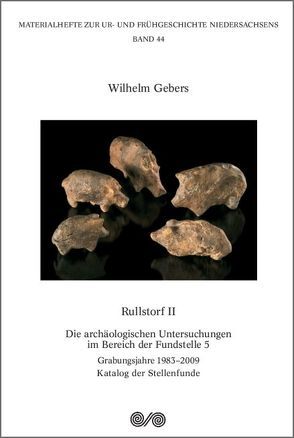
Die markante Geländeerhöhung des Kronsberges bei Rullstorf, Lkr. Lüneburg, über der Elbtalniederung bei Scharnebeck mußte über drei Jahrzehnte auf fast 8 ha Fläche wegen Sandabbau und Kiesabbau untersucht werden, weitere 6 ha bilden heute ein Bodendenkmal. Abgesehen von der Größe der drei Fundstellen 5, 8 und 9 ist die fast “pompejanische” Befunderhaltung mit ungewöhnlich großen Fundmengen infolge mächtiger Sandüberwehungen einzigartig. Die Befunde reichen von einem mesolithischen Rastplatz über neolithische Langhäuser mit erhaltenen Laufhorizonten, Siedlungen und Gräberfelder der Bronzezeit und Eisenzeit, eine kaiserzeitliche langobardische Siedlung, ein reiches spätsächsisches Gräberfeld mit Verbrennungsplätzen und Bestattungsplätzen, Kultbauten und Tierbestattungen bis zu bemerkenswerten Relikten vor- und frühgeschichtlicher Eisenverhüttung und einer ganzen Zeile von Grubenhäusern des Frühmittelalters. Die Bände Rullstorf I-III stellen Kleinfundvorlagen dar, wobei Stellenfunde [= Funde mit Befund, Band II] und Quadrantenfunde [Band III] getrennt wurden. Bände IV-V werden sich mit der Befundauswertung befassen.
Aktualisiert: 2022-09-17
> findR *
MEHR ANZEIGEN
Bücher zum Thema Siedlungskammer
Sie suchen ein Buch über Siedlungskammer? Bei Buch findr finden Sie eine große Auswahl Bücher zum
Thema Siedlungskammer. Entdecken Sie neue Bücher oder Klassiker für Sie selbst oder zum Verschenken. Buch findr
hat zahlreiche Bücher zum Thema Siedlungskammer im Sortiment. Nehmen Sie sich Zeit zum Stöbern und finden Sie das
passende Buch für Ihr Lesevergnügen. Stöbern Sie durch unser Angebot und finden Sie aus unserer großen Auswahl das
Buch, das Ihnen zusagt. Bei Buch findr finden Sie Romane, Ratgeber, wissenschaftliche und populärwissenschaftliche
Bücher uvm. Bestellen Sie Ihr Buch zum Thema Siedlungskammer einfach online und lassen Sie es sich bequem nach
Hause schicken. Wir wünschen Ihnen schöne und entspannte Lesemomente mit Ihrem Buch.
Siedlungskammer - Große Auswahl Bücher bei Buch findr
Bei uns finden Sie Bücher beliebter Autoren, Neuerscheinungen, Bestseller genauso wie alte Schätze. Bücher zum
Thema Siedlungskammer, die Ihre Fantasie anregen und Bücher, die Sie weiterbilden und Ihnen wissenschaftliche
Fakten vermitteln. Ganz nach Ihrem Geschmack ist das passende Buch für Sie dabei. Finden Sie eine große Auswahl
Bücher verschiedenster Genres, Verlage, Autoren bei Buchfindr:
Sie haben viele Möglichkeiten bei Buch findr die passenden Bücher für Ihr Lesevergnügen zu entdecken. Nutzen Sie
unsere Suchfunktionen, um zu stöbern und für Sie interessante Bücher in den unterschiedlichen Genres und Kategorien
zu finden. Unter Siedlungskammer und weitere Themen und Kategorien finden Sie schnell und einfach eine Auflistung
thematisch passender Bücher. Probieren Sie es aus, legen Sie jetzt los! Ihrem Lesevergnügen steht nichts im Wege.
Nutzen Sie die Vorteile Ihre Bücher online zu kaufen und bekommen Sie die bestellten Bücher schnell und bequem
zugestellt. Nehmen Sie sich die Zeit, online die Bücher Ihrer Wahl anzulesen, Buchempfehlungen und Rezensionen zu
studieren, Informationen zu Autoren zu lesen. Viel Spaß beim Lesen wünscht Ihnen das Team von Buchfindr.







